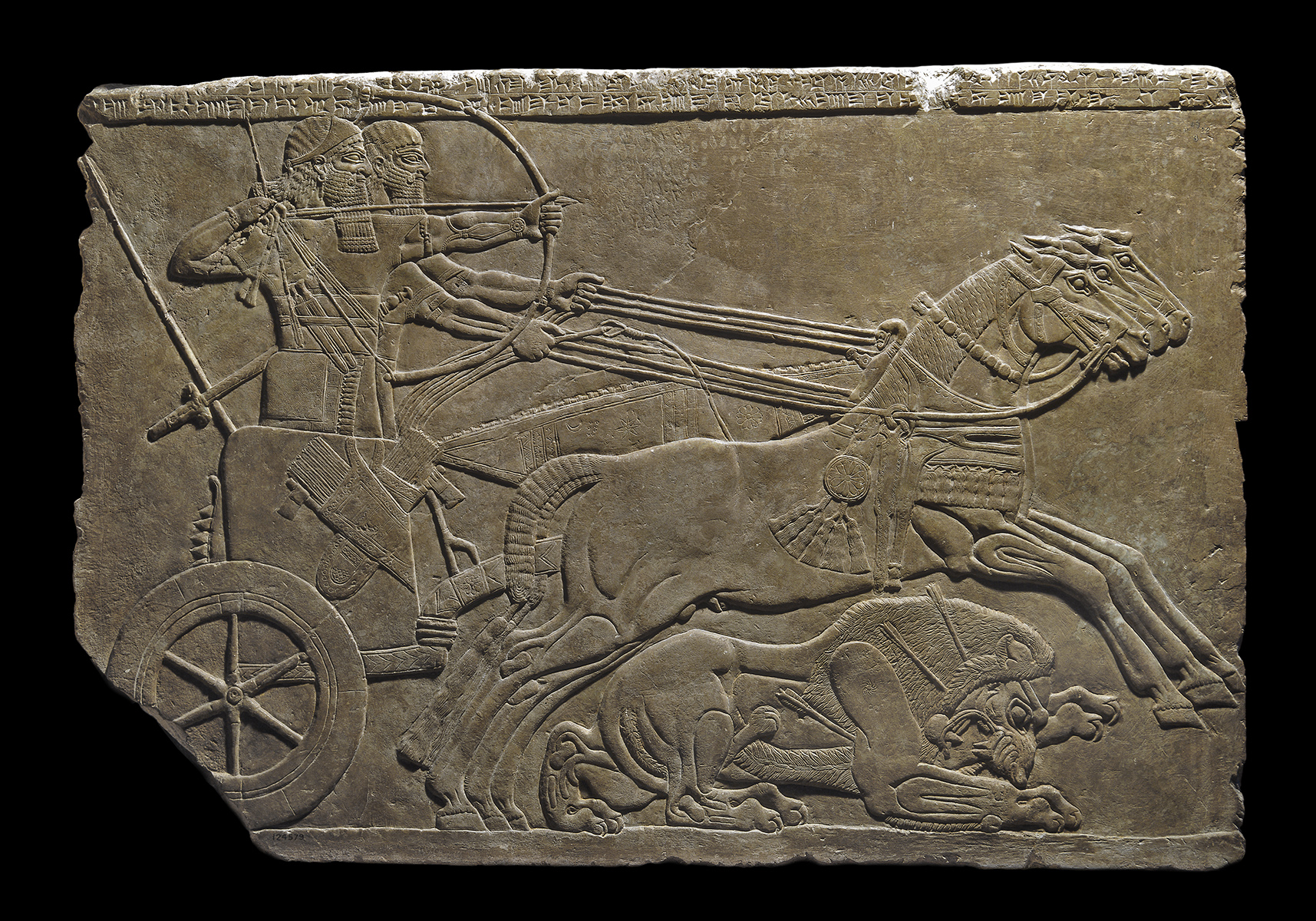Art of Ancient Iraq
The art and culture of the ancient Middle East is not one of my strong points, so I am not going to pretend to say anything particularly profound about Art and Empire: Treasures from Assyria in the British Museum, which opens at the Museum of Fine Arts, Boston on September 21 and runs through January […]

Royal lion hunt Assyrian, reign of Ashurnasirpal II, 875-860 B.C. Gypsum *The Trustees of the British Museum ME 124579 *© The Trustees of the British Museum 2008. All rights reserved. *Courtesy, Museum of Fine Arts, Boston
Photo Credit:The art and culture of the ancient Middle East is not one of my strong points, so I am not going to pretend to say anything particularly profound about Art and Empire: Treasures from Assyria in the British Museum, which opens at the Museum of Fine Arts, Boston on September 21 and runs through January 4, 2009. The exhibition consists of some 250 objects, ranging from monumental wall reliefs to cuneiform tablets, cylinder seals, and decorative ivory pieces, all from the Assyrian Empire (9th through 7th century B.C.) by way of the British Museum, which boasts the largest collection of Assyrian art outside of Iraq.
When the United States invaded Iraq in 2003, the National Museum in Baghdad was looted and the sacking of thousands of archeological sites in modern day Iraq (ancient Assyria) reportedly continues to this day, so I guess posterity should be grateful that British archeologists looted Iraq’s cultural patrimony back in the 19th century, dispersing whole palaces to collections in Europe and the United States. Whenever I want an aesthetic touchstone to the war in Iraq, for instance, I just drive by the Bowdoin College Museum of Art in Brunswick, Maine, where the Assyrian reliefs that are the most valuable works of art in Maine are on constant lighted display in the museum’s windows.
The Assyrian wall reliefs at Bowdoin come from the palace of King Ashurnasirpal II (883-859 B.C.) as do many of objects in Art and Empire. Today, we think of Mosul as a battleground in the war against terror, but back in the 19th century archeologists discovered a treasure trove of artifacts there from the ancient Assyrian city of Kalhu. As difficult as it may be for us to imagine, the region of the Middle East that now threatens the peace and stability of the world was, in fact, Mesopotamia, the cradle of urban civilization.
The Assyrian empire that once encompassed all of modern Iraq, Syria, and Lebanon as well as large parts of Israel, Egypt, Turkey, and Iran was a rich culture of palaces and temples, royalty and military might, nascent science and religion, all now expressed mutely in stone carvings and clay tablets with inscrutable (to the uninitiated) markings. The Assyrians fell to the Babylonians in 609 B.C. and the history of the region has been one of violent upheavals just about ever since. That a once proud civilization could have so totally devolved into the tribal and factional chaos that plagues the region today is a cautionary tale for all world powers – something worth bearing in mind as you wander thoughtfully through the hallowed halls of the Museum of Fine Arts gazing upon the scattered ruins of empire.
On a human level, Art and Empire is a stretch for those of us who know so little of the ancient past. Whenever I am faced with objects and artifacts that mean nothing to me, I find myself thinking not of their owners but of their makers. The noble, stony statue of King Ashurnasirpal II, for example, was carved by artisans now dust. They labored in the eternal desert heat, beneath our same sun, to create a likeness of their lordship. I think of their thirst, of the calluses on their hands, of who they thought they were.
The sculptors of Ashurnasirpal II could not have imagined their work displayed 3,000 years later in a climate-controlled gallery in a world they didn’t even know existed any more than we can imagine the MFA collection dispersed 3,000 years from now to a museum on Mars. Ars longa, vita brevis.
Museum of Fine Arts, Boston, Avenue of the Arts, 465 Huntington Ave., Boston, MA, 617-267-9300.







